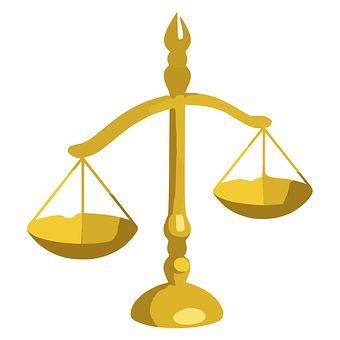Financial planning is an essential part of ensuring long-term financial stability and achieving one’s monetary goals. In an environment where technology evolves rapidly and financial markets become increasingly complex, modern financial planning requires effective digital tools. With a plethora of available options, discovering the right instruments to track expenses, invest intelligently, and plan for retirement can be overwhelming. This comprehensive guide delves into a curated selection of the best financial planning tools available today, their features, and how they can transform your personal finance management.
Modern financial planning has shifted from traditional pen-and-paper methods to advanced digital platforms designed to empower users with real-time insights and data-driven advice. Whether you are a beginner starting to understand budget management or an experienced investor in search of detailed analytics, there are tools crafted specifically to cater to every need.
The article below not only reviews the standout financial planning tools available but also emphasizes user-friendly interfaces, integration capabilities, and state-of-the-art features that support saving, investing, and strategic planning. As we explore these tools, consider the evolving trends and the necessity for these digital solutions to adjust to changes in technology, regulatory norms, and market dynamics.
Why Use Digital Financial Planning Tools?
Financial planning tools can make a significant difference for individuals and households by offering the following benefits:
-
Ease of Tracking and Analysis: With digital platforms, users can automatically track spending, set budgets, and generate comprehensive reports.
-
Real-Time Updates: From real-time stock quotes to up-to-date financial news, many applications offer live insights.
-
Automation: Many tools feature automatic bill payments, investment rebalancing, and routine updates which reduce human error.
-
Personalization: Tools now provide tailored advice based on user behavior, history, and financial goals.
-
Data Security: Modern financial planning tools come equipped with encryption and data protection protocols, safeguarding your sensitive financial information.
-
Integration: Many platforms can sync with bank accounts, credit cards, and external investment accounts, offering a centralized view of one’s finances.
Categories of Financial Planning Tools
Financial planning tools fall under various categories. To help you navigate, we divide the available options into several primary groups. Below is an alphabetical outline of the core functionalities these categories often encompass:
A. Budgeting and Expense Management
B. Investment Tracking and Analysis
C. Retirement Planning
D. Debt Management
E. Financial Goal Setting and Forecasting
Each of these categories offers unique benefits that cater to specific aspects of your financial planning journey.
A. Budgeting and Expense Management Tools
Budgeting tools are among the first solutions people seek when beginning their financial planning journey. These applications are designed to help users understand how money flows in and out of their accounts, identify overspending in specific categories, and make necessary adjustments.
Key Features of Budgeting Tools
Modern budgeting applications include several sophisticated features such as:
A. Automated Transaction Categorization: Advanced algorithms automatically sort your expenditures into categories like groceries, transportation, and utilities.
B. Customizable Budgets: Users have the flexibility to set monthly or annual budgets based on spending patterns and personal goals.
C. Visual Reports: Graphs, pie charts, and dashboards provide visual insights into where your money is going, helping highlight areas for improvement.
D. Alerts and Notifications: Set alerts for when spending thresholds are reached, ensuring timely adjustments to avoid overspending.
Examples:
-
Mint: Widely recognized for its intuitive interface, Mint helps users consolidate their financial accounts, track spending, and monitor budgets all in one place.
-
You Need a Budget (YNAB): Focusing on proactive budgeting, YNAB emphasizes goal-setting and teaching sound financial habits by assigning every dollar a specific job.
-
PocketGuard: Designed for simplicity, PocketGuard helps track daily expenditures and provides alerts when overspending is detected.
These tools have proven essential for those who wish to take control of their day-to-day financial behaviors. They cater not only to novices but also to those who require detailed reports for informed decision-making.
B. Investment Tracking and Analysis
Investing can be a daunting process without the right tools. Digital platforms now offer comprehensive dashboards to track your investments, monitor market trends, and analyze portfolio performance.
Essential Features in Investment Tools
Investment-focused financial planning tools often include:
A. Real-Time Market Data: Instant updates on stock prices, market indices, and investment trends ensure timely decision-making.
B. Portfolio Analysis: In-depth analytics reveal diversification, risk levels, and asset allocation, which are crucial for long-term wealth building.
C. Simulation Tools: Some platforms allow users to simulate market scenarios, helping them understand potential outcomes before making substantial investments.
D. Integration with Brokerage Accounts: Seamless integration means you can monitor investments without logging into multiple accounts.
Examples:
-
Personal Capital: With its powerful investment tracking and retirement planning tools, Personal Capital offers robust portfolio analysis alongside daily financial oversight.
-
Morningstar: Known for its detailed analysis and comprehensive research reports, Morningstar is a trusted resource for investors seeking to understand market dynamics.
-
Betterment: This robo-advisor integrates investment tracking with automated asset allocation, allowing users to monitor their portfolios while minimizing the hassle of manual rebalancing.
These platforms are excellent resources for advanced investment strategies, offering both beginners and seasoned investors the tools they need for success.
C. Retirement Planning Solutions
Planning for retirement is a critical component of long-term financial security. Retirement planning tools help forecast future expenses, savings, and investment growth, ensuring that you are well-prepared for the future.
Features of Effective Retirement Planning Tools
A robust retirement planning tool typically includes:
A. Projection Calculators: These calculators take into account current savings, expected future contributions, and anticipated market returns.
B. Scenario Analysis: Test various scenarios such as early retirement, changes in lifestyle, or economic downturns to see how they impact your retirement fund.
C. Tax Optimization Guidance: Many tools help optimize retirement portfolios by considering tax advantages associated with retirement accounts like IRAs or 401(k)s.
D. Customizable Retirement Goals: Create personalized retirement plans that consider career growth, inflation, and potential healthcare costs.
Examples:
-
Fidelity Retirement Score: Fidelity’s tool offers a comprehensive assessment of your retirement readiness and provides personalized advice to help close any gaps.
-
Vanguard Retirement Nest Egg Calculator: This user-friendly tool allows you to project your retirement spending and sustainability based on various asset allocation scenarios.
-
T. Rowe Price Retirement Income Calculator: Providing detailed income projections, this tool helps you visualize your retirement lifestyle based on savings and expected expenses.
Retirement planning tools ensure that you can plan proactively, adjusting for shifts in the market and changes in personal circumstances so that you are well-equipped for the future.
D. Debt Management Resources

Managing debt effectively is as crucial as planning investments or retirement. Debt management tools help you stay on top of obligations, plan for payoff strategies, and reduce overall financial stress.
Core Functions of Debt Management Tools
Debt management platforms typically feature:
A. Debt Consolidation Analysis: Compare different consolidation options to lower interest rates and minimize monthly payments.
B. Payoff Calculators: Visualize how extra payments can shorten the life of a loan and reduce interest costs over time.
C. Automated Reminders: Alerts ensure that you never miss a due date and avoid additional fees.
D. Customizable Debt Payoff Plans: Develop tailored strategies that target high-interest debts first or restructure repayment schedules efficiently.
Examples:
-
Undebt.it: This free, web-based tool offers customizable debt payoff strategies, allowing users to see which method (like debt avalanche or snowball) best suits their financial situation.
-
Debt Payoff Planner: Focused on creating tailored payoff plans, this application supports both simple and complex debt scenarios.
-
Tally: Primarily designed for credit card debt management, Tally automates payments and helps users manage multiple credit card balances while reducing interest payments.
The ability to manage debt with these tools not only improves your credit score but also sets a strong foundation for building wealth over time.
E. Comprehensive Financial Goal Setting
Creating financial goals and tracking progress towards them is a fundamental step in financial planning. Comprehensive goal-setting platforms help ensure you remain focused on both short-term and long-term objectives.
Characteristics of Effective Financial Goal-Setting Tools
These platforms are designed to provide:
A. Custom Goal Creation: Users can define goals such as purchasing a home, saving for education, or planning a dream vacation, with clear milestones and deadlines.
B. Progress Tracking: Visual dashboards display how close you are to achieving your goals, including percentage progress and projected timelines.
C. Budgeting Integration: Directly linking goals to budgets ensures that your expenditure aligns with your objectives.
D. Automated Savings Plans: Some tools automatically transfer funds to dedicated savings goals based on spending habits and income patterns.
Examples:
-
Goalsetter: This platform focuses on making financial goal setting interactive, offering a range of tools to educate and motivate users to save and invest wisely.
-
Qapital: By combining behavioral psychology with automated savings rules, Qapital makes goal setting fun and engaging.
-
Acorns: Although primarily known as an investment app, Acorns also lets users set specific financial goals while rounding up everyday purchases to fund long-term savings.
Financial goal setting is not only about establishing what you want to achieve—it is also about tracking progress and making real-time adjustments to ensure that those goals remain within reach, regardless of life’s unexpected twists.
Integrating Multiple Tools for Holistic Financial Management
One of the most beneficial strategies in personal finance is integrating multiple specialized tools to achieve a complete picture of your financial situation. Instead of relying on a single solution, you can link various platforms to synchronize data across budgeting, investing, retirement planning, and debt management.
A. Data Aggregation Platforms: Tools like Personal Capital and Mint offer the ability to connect multiple financial accounts, including bank accounts, investment portfolios, and credit cards. This comprehensive view enables informed decisions based on consolidated data.
B. API Integration: Advanced tools now allow for third-party integrations via APIs, which means your preferred applications can share data seamlessly, reducing manual input and the risk of errors.
C. Cloud-Based Storage: With secure cloud storage, your financial data is not just backed up automatically but can also be accessed from anywhere, enhancing the flexibility and responsiveness of your financial plan.
For example, by integrating budgeting tools with investment tracking systems, users can identify opportunities to allocate surplus funds toward higher-yield investments while ensuring that their daily expenses do not derail long-term objectives. This interconnected ecosystem not only simplifies managing finances but also enhances overall financial well-being.
Emerging Trends in Financial Planning Tools
As technology continues to evolve, the landscape of financial planning is also transforming. Some of the emerging trends include:
A. Artificial Intelligence and Machine Learning:
-
These technologies can analyze spending patterns and predict future trends, offering users proactive advice on saving and investing.
-
AI-powered tools can detect irregularities in spending and alert users to potential fraud.
B. Blockchain and Cryptocurrency Integration:
-
With the rise of digital currencies, modern planning tools are beginning to integrate cryptocurrency portfolios, providing a comprehensive view of both traditional and digital assets.
-
Security enhancements via blockchain technology add an extra layer of safety for sensitive financial data.
C. Enhanced User Experience and Mobile-First Design:
-
As more users access financial tools from mobile devices, companies are focusing on creating intuitive, streamlined interfaces.
-
Mobile platforms now offer features such as biometric authentication and real-time alerts that ensure both convenience and security.
D. Personalized Financial Coaching:
-
Many modern tools are incorporating elements of personalized financial coaching, offering advice based on your unique financial habits and goals.
-
These services are often augmented by chatbots and virtual assistants, ensuring timely and relevant guidance.
By keeping these trends in mind, users can future-proof their financial planning strategies and take advantage of the latest innovations for better money management.
Best Practices for Selecting the Right Financial Tool
Selecting a financial tool that aligns with your specific needs requires more than simply comparing features. Consider the following factors before making your choice:
A. Ease of Use:
-
The interface should be intuitive and user-friendly, allowing you to navigate features without extensive training.
-
Look for applications with robust customer support and clear tutorials.
B. Security and Privacy:
-
Always check if the tool offers strong encryption and complies with data protection regulations (like GDPR or CCPA) to safeguard your financial information.
-
Evaluate user reviews regarding the tool’s security and any past incidents.
C. Integration Capabilities:
-
A tool should be able to integrate seamlessly with other financial accounts and software you may already be using.
-
Consider whether the provider supports open APIs or partnerships with financial institutions.
D. Cost versus Benefits:
-
Free tools often provide basic functionalities, while premium versions may unlock advanced features.
-
Weigh the cost against the added value and ensure that the subscription fees justify the improvements in your financial planning routine.
E. Reputation and User Reviews:
-
Research independent reviews and ratings. Recommendations from trusted financial advisors can also help in making an informed decision.
-
Compare user testimonials, especially those that detail long-term performance and customer service satisfaction.
By following these best practices, you can avoid the pitfalls of selecting an unsuitable platform and instead build a portfolio of tools that reinforce a robust, forward-thinking financial plan.
Case Studies and Success Stories

The impact of effective financial planning tools is best illustrated through real-life examples. Below are a few hypothetical case studies that demonstrate the transformative effects of using these digital resources:
Case Study 1: Young Professional’s Journey
A 28-year-old professional started by using budgeting apps to gain insights into daily expenses. After integrating investment tracking and retirement planning tools, they were able to identify surplus funds, reinvesting them into a diversified portfolio. This holistic approach not only improved their credit score but also accelerated their saving rate for a down payment on a house.
Case Study 2: Family Financial Stability
A middle-aged couple, juggling household expenses and planning for their children’s education, turned to comprehensive financial goal-setting tools. By establishing clear milestones for education funds and leveraging debt management applications, they consolidated multiple loans. Regular tracking and periodic financial reviews allowed them to free up additional funds for investment, solidifying their long-term financial security.
Case Study 3: Retirement Planning Overhaul
An individual nearing retirement used retirement planning solutions combined with investment tracking. They reassessed their asset allocation and adjusted their strategy based on real-time market trends. The automated adjustments and proactive alerts helped mitigate risk during market volatility, ensuring that their savings met the projected retirement target without undue stress.
Each of these case studies exemplifies how modern financial planning tools can lead to tangible improvements in financial health by streamlining processes, reducing stress, and providing actionable insights.
Future Outlook and Innovations
The future of financial planning is bright, with ongoing innovations poised to address even the most complex financial challenges. As the financial landscape integrates emerging technologies such as blockchain, big data analytics, and advanced AI, the next generation of financial tools will offer even more personalization, efficiency, and security.
Innovations that we anticipate include:
A. Enhanced Robo-Advisors: Next-generation robo-advisors will likely offer deeper integration with all aspects of personal finance, moving beyond simple portfolio management to become comprehensive financial coaches.
B. Voice-Activated Financial Assistants: These tools will allow users to interact with their financial data via natural language commands, making financial planning as simple as having a conversation.
C. Augmented Reality (AR) Financial Dashboards: Imagine being able to visualize your financial progress in a 3-D space, enabling a more immersive understanding of your financial journey. D. Global Financial Integration: As the digital economy expands, future tools will increasingly handle multi-currency accounts, cross-border transactions, and international investments with ease and enhanced security.
By staying abreast of these upcoming developments, both seasoned investors and those just beginning their financial journey can prepare to harness these technologies for improved financial performance.
Conclusion
In today’s complex financial environment, harnessing the power of digital financial planning tools can dramatically transform your approach to managing money. From budgeting and expense management to investment tracking, retirement planning, debt management, and goal setting, these tools offer tailored solutions that simplify the process and help secure your financial future. With emerging trends fueled by AI, mobile-first applications, and advanced security, the future of financial planning is not only promising but also more accessible than ever.
When choosing a tool, consider its ease of use, security features, integration capabilities, cost, and overall reputation. By carefully evaluating these aspects, you can select the right combination of tools to form a holistic, well-rounded financial strategy. Remember, effective financial planning is not just about managing money; it’s about creating a sustainable system that evolves with your needs, bringing clarity and confidence to every financial decision.
Whether you are stepping into the world of personal finance or looking to optimize your current strategy, the right financial planning tools can unlock the potential to achieve your financial dreams. Embrace these innovations and start building a future defined by financial security and freedom.






